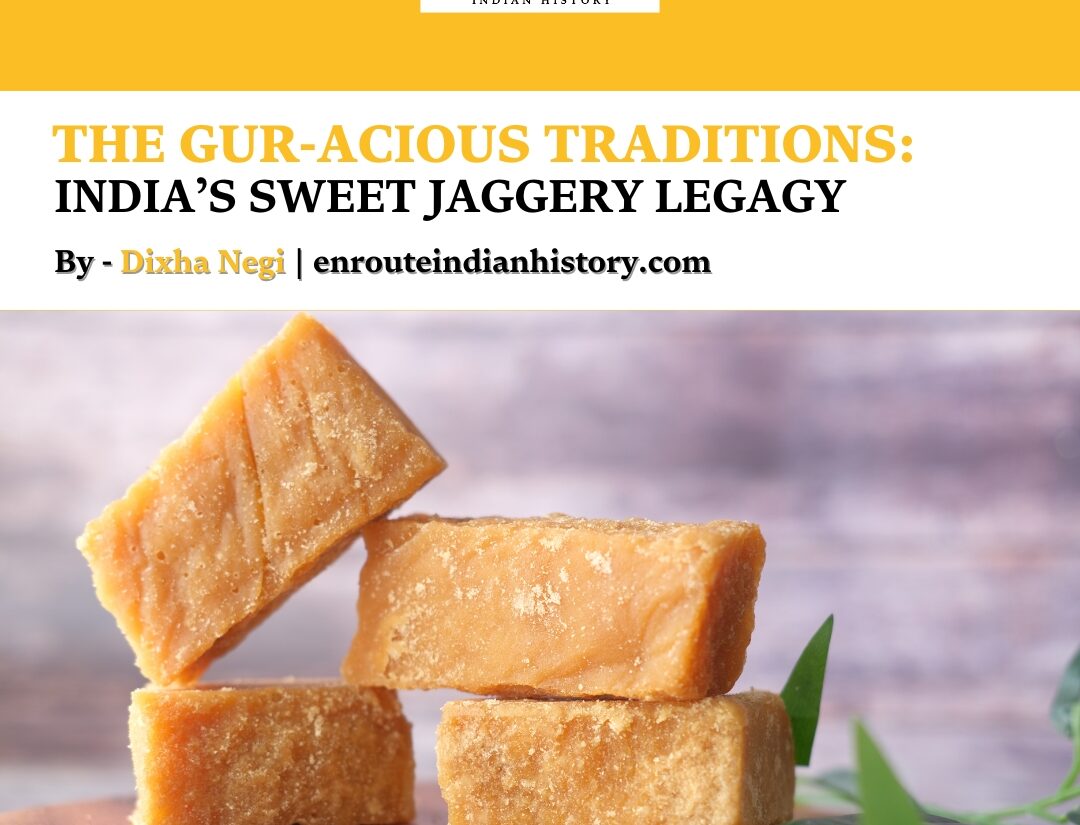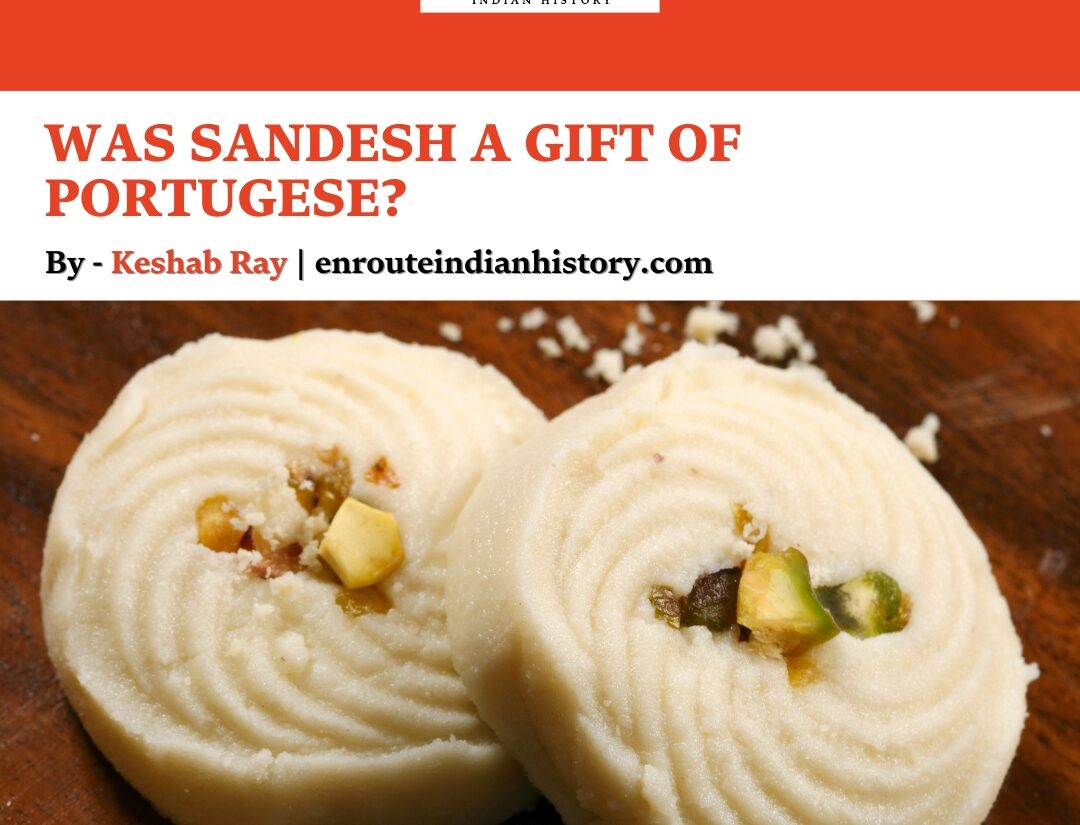THE GUR-ACIOUS TRADITIONS: INDIA’S SWEET JAGGERY LEGAGY
- iamanoushkajain
- September 25, 2024

India is currently the world’s largest producer of jaggery!
Being a frequent traveller to Uttarakhand, I find it quite common to see small factories that employ both modern and traditional methods of producing jaggery. As much as it pains to know the working conditions of such factories, it is also a skill and art of preserving nature’s resources. With winter soon approaching, we ought to talk about this wonder.
With a very peculiar and strange texture and colour, jaggery or gur, as we call it here in India, is a staple in many of our traditional foods and desserts. From laddoos to chaats to our nimbu khattai, it has always secured its place in our sweet palette.
Jaggery is an unrefined sugar made from evaporating sugarcane juice or palm sap. Due to a rise in health consciousness and everyone going haywire to find better alternatives to refined sugar, India probably steals the show with this treasure.
According to Britannica Encyclopaedia, the word Jaggery has been derived from Sanskrit. Known as ‘śarkarā’ in Sanskrit, it was the only known sugar source to the subcontinent even far-reaching to the other parts of Africa and Asia. This term was further adopted into Malayalam as ‘śarkara’. It was the Portuguese, having contact with the Indian subcontinent, borrowed this Malayalam word and adapted it to ‘jágara’, from where it was further anglicized to become ‘jaggery’.
Many ancient Ayurvedic texts mention its benefits. Texts like Charaka Samhita, which is one of the most fundamental texts of Ayurveda, Susruta Samhita, another foundational Ayurvedic text, and many more state many benefits of incorporating jaggery into our diets like stronger digestive systems, enhanced bone health, therapeutic advantages and many more.
It is interesting to note that in Europe, jaggery or khand is referred to as mascabado/muscovado, which is a Portuguese/Spanish word for “lowest quality” or “to be contemptuous.” At present, the word is mainly used for ‘khand’ or what the white man used to describe “unrefined brown sugar with a strong molasses flavour, made from the juice of sugar cane.”
Generally, jaggery is made from sugarcane (unless of a different kind of variety or adulterated) and usually involves three or more steps for its preparation.
Fresh sugarcane is pressed through machines that extract all the juices or sap from them. (Notice one in your nearest sugarcane juice corner) This is the extraction phase. For Clarification, this extracted juice is allowed to sit in large tanks so that the residue and sediments can settle down at the bottom, giving us a clear liquid. During Concentration, this liquid is boiled for hours while being constantly stirred, allowing the impurity to skim off the top giving us a thick-yellow paste. This paste when allowed to cool off, becomes hard eventually giving us what we call the jaggery.
Jaggery, traditionally, can be made with both sugarcane and palm sap, although both methods give distinctive, in both taste and texture, outputs.
In the end, all the basic processes of making sweeteners require sugarcane juice, which has remained largely unchanged even today. Almost all kinds of common sweeteners, be it Khand, jaggery or sugar, go through the same process of manufacturing as stated above. The major difference in the manufacturing of each of these sweeteners is the refining process.
Just like the Eurocentric ideology of “white” and “refined” being, at the top of the survival chain, this notion was no different with foods. The cultural preference for white and refined foods led to the development of more complex processes for refining sugar, which involves the use of chemicals, to “refine” the “impurities” present. While on one hand, such processes do result in beautiful white crystals, they also remove or destroy many of the nutrients originally present in the sugarcane juice.
The jaggery and khand industry began to face a rapid decline with the arrival of imported beet sugar. Subsequently, in the second half of the sixteenth century, such khandasari factories slowly faced a shutdown. Although, the Dutch first tried to introduce the modern factory system for making white sugar from sugarcane, around 1840, but their attempt was unsuccessful. This factory system remained highly experimental until the 19th century, and eventually, the first successful factory was established by British entrepreneurs in probably, 1903. This led to an even more rapid decline in traditional jaggery and khandasari industries. Until the 1930s, the Indian sugar industry was in its infancy and struggled to compete with foreign sugar imports.
In the early 1930s, the modern sugar industry flourished in India, which started with the tariff protection grants to the sugar industries. The British Government also passed the “Sugar Industry Protection Act” in 1932, with the twin objective of making itself self-sufficient in sugar and developing the home industries. In 1950-51, India embarked on a path of industrial planning. This included setting targets for sugar production and consumption; the government also played a role in licensing and installing sugar production capacity for each of the Five-Year Plan periods.
A large number of people in India suffer due to nutrition deficiency or malnutrition. Jaggery, being a low-grade non-centrifugal sweetener, is rich in vitamins and important minerals, that are present in sugarcane juice. The jaggery industry is a significant agro-based industry in India, operating within the unorganized sector. Jaggery is the most nutritious among all the sweeteners. It is used in various products like – patti, chikki, gazak, report, etc. It is also very effective for pregnant women as it removes all clotted blood within 40 days after the child’s delivery. As the slow trend of health consciousness grows, urban people especially, came to use jaggery as more like a health supplement than a sweetener.
Jaggery stands as a testament to our country’s rich culinary heritage and sustainable practices. Its nutritional benefits, coupled with its rich historical significance that even our ancestors trusted, make it a compelling choice for consumers seeking healthier alternatives to refined sugars.
While the jaggery industry has faced challenges in recent decades, its resurgence, driven by a growing awareness of its health benefits and a renewed appreciation for traditional food, is evident. As India continues to play a leading role in the global jaggery market, it’s essential to support small-scale producers and promote sustainable practices to ensure the continued production of this valuable commodity.
By embracing jaggery and incorporating it into our daily lives, we not only savour a delicious and nutritious treat but also contribute to the preservation of a cultural heritage that has endured for centuries. Let’s raise a toast to Jaggery, a sweet reminder of India’s rich past and its promising future.
REFERENCES AND IMAGES
www.britannica.com. (n.d.). Jaggery | Description, Facts, Health Benefits, & Sugar | Britannica. [online] Available at: https://www.britannica.com/topic/jaggery.
Pawar, Y. (2018). The ‘gur’ old trail. [online] Available at: https://www.dnaindia.com/just-before-monday/report-the-gur-old-trail-2619112[Accessed 14 Sep. 2024].
Oxfordlearnersdictionaries.com. (2024). muscovado noun – Definition, pictures, pronunciation and usage notes | Oxford Advanced Learner’s Dictionary at OxfordLearnersDictionaries.com. [online] Available at: https://www.oxfordlearnersdictionaries.com/definition/english/muscovado [Accessed 14 Sep. 2024].
Ratna Rajaiah (2023). Is jaggery really better than sugar? Yes, and also more nutrient-rich, says this book. [online] Scroll.in. Available at: https://scroll.in/article/1059206/is-jaggery-really-better-than-sugar-yes-and-also-more-nutrient-rich-says-this-book [Accessed 14 Sep. 2024].
Gangwar, L.S., Solomon, S. and Anwar, S.I. (2015). Technological and Policy Options for Modernization of Jaggery Industry in India. [online] www.iisr.nic.in. Available at: https://iisr.icar.gov.in/iisr/download/publications/report/policypaper_gangwar.pdf [Accessed 14 Sep. 2024].
CHAPTER -III HISTORY OF SUGAR INDUSTRY IN INDIA ( In General ). (n.d.). Available at: http://ir.unishivaji.ac.in/bitstream/123456789/778/10/10_Chapter%204.pdf [Accessed 15 Sep. 2024].
All images from Wikimedia Commons (public domain)
- September 27, 2024
- 9 Min Read
- May 15, 2024
- 6 Min Read
- March 27, 2024
- 11 Min Read























